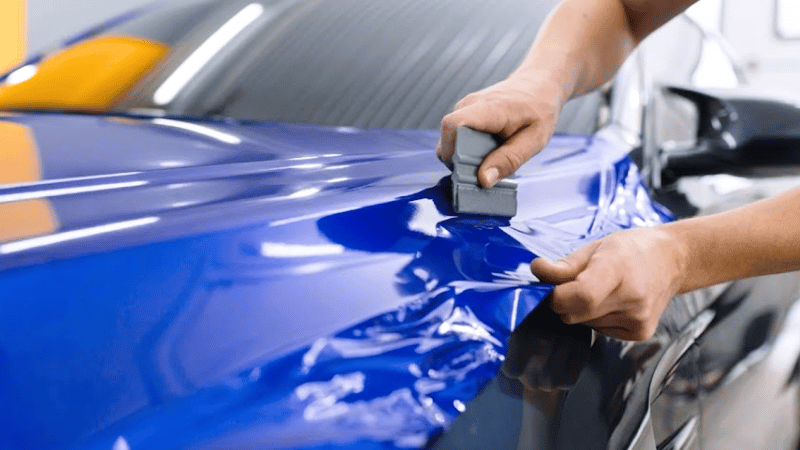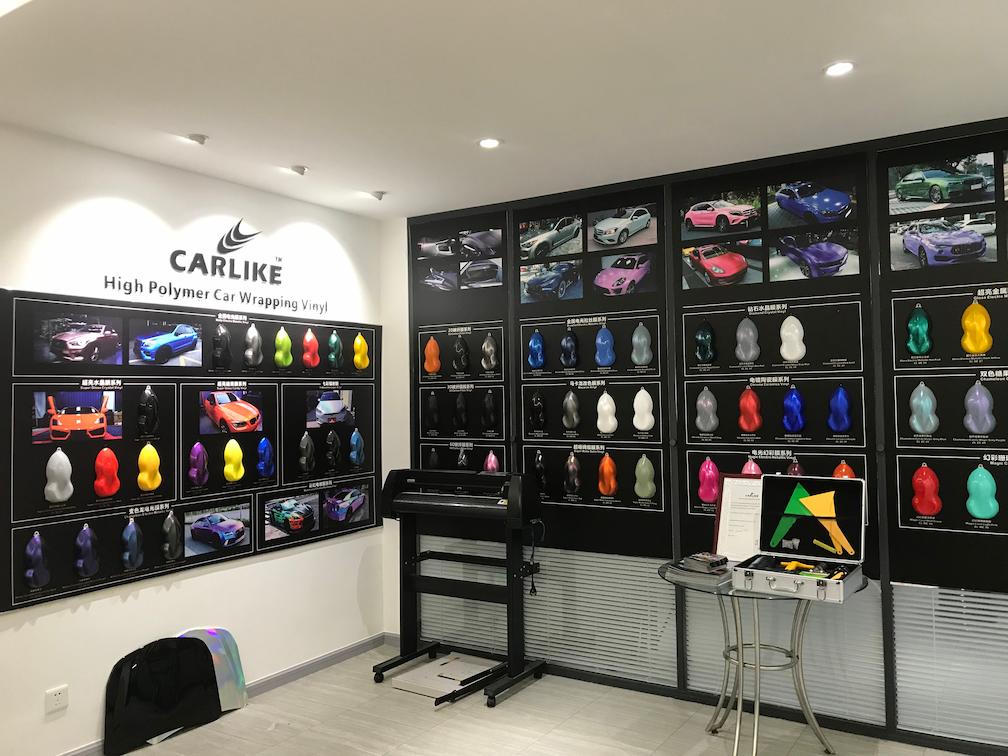Does wrapping a car damage the paint? It’s easy to believe hearsay rather than research the facts yourself, but doing so means missing out on the real benefits of vinyl wraps. If you’ve been told that car wraps harm your paint, this article will debunk those myths once and for all. Curious how? Let’s dive in!
What Is a Car Wrap and How Does It Work?

Vinyl wraps are adhesive-backed films made from the polymer of polyvinyl chloride, which features a strong tensile strength to make them stretchable. These films are increasingly being employed as a protective layer that guards the factory paint of automobiles from damage.
Bonding
Vinyl wraps are manufactured either with pressure-sensitive adhesive or with heat-activated adhesive, which gets activated by pressure/heat. So, when the wraps are applied with a squeegee and heat gun, the adhesive activates and sticks to the surface.
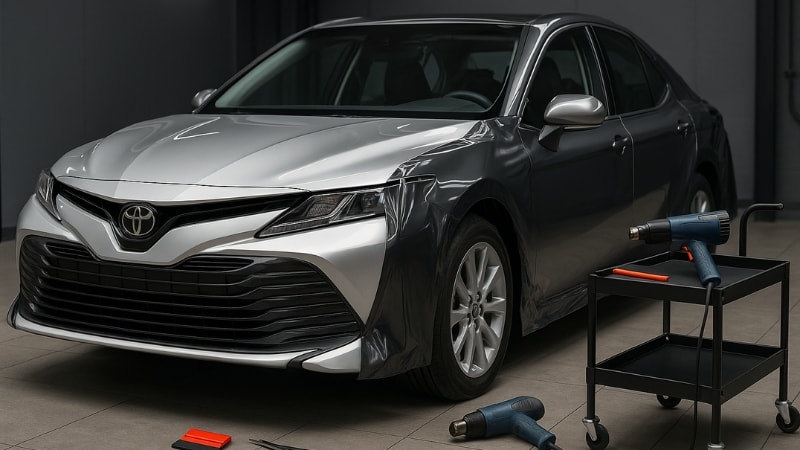
Does Wrapping a Car Damage Paint?: The Truth
Here’s the truth: No, wrapping a car with a vinyl wrap absolutely doesn’t damage the paint, but rather it becomes the protector of the paint. Wrapped cars are safer on the road from sudden scratches, abrasions, and rock chips.
Science Behind:
Vinyl vehicle wraps of good quality protect the original paint because their adhesive only bonds to the clear coat that sits on top of the paint, not to the paint. This way, when the wrap is removed, it only comes off from the upper layer without pulling or damaging the paint beneath.
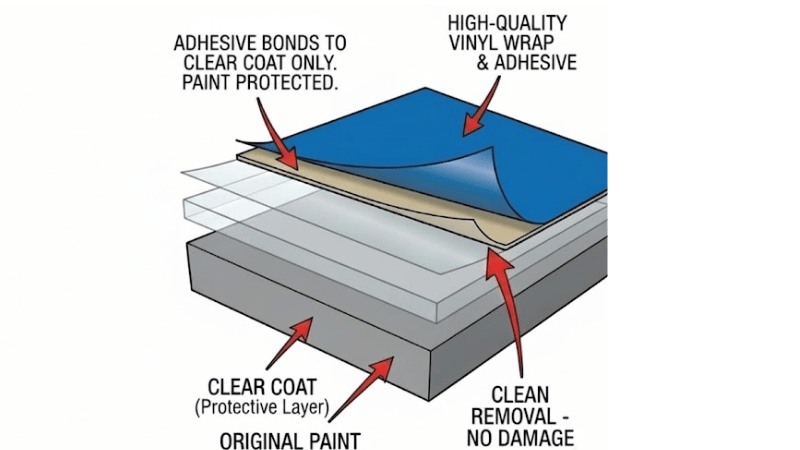
Benefits of Wrapping a Car Instead of Repainting
Vinyl wraps offer benefits far more than cosmetic enhancement because these wraps are also a proactive investment in protecting your vehicle. Rather than spending your money on repainting, you preserve the existing paint and shield it from subsequent wear and tear.
Superior Paint Protection
Protecting your original paint isn’t just about aesthetics; it’s about financial sense. According to automotive valuation experts at Kelley Blue Book (KBB), the exterior condition of a vehicle is a primary factor in determining its trade-in value.

- The “Excellent” Standard: To qualify for KBB’s “Excellent” condition rating (which commands the highest price), a car’s paint must be “free of any scratches, dings, or rust.”
- The Impact: A vinyl wrap acts as a sacrificial layer. By preserving the factory paint in pristine condition underneath, you can potentially increase your vehicle’s resale value by 10-15% compared to a car with visible UV damage or road rash.
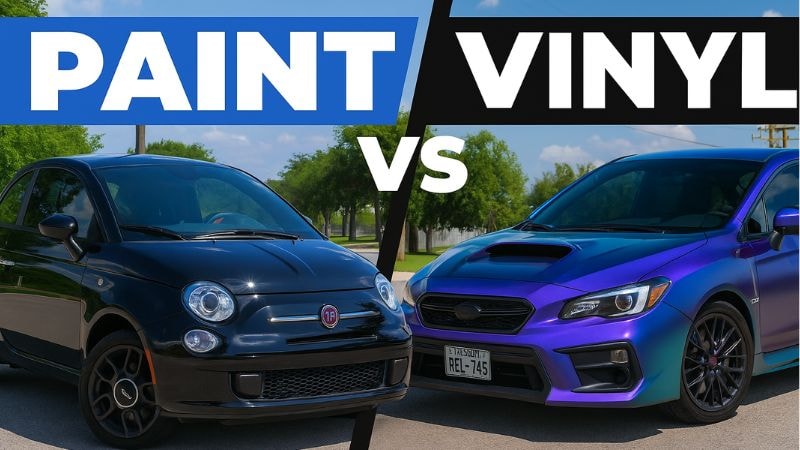
Fully Reversible Style Change
Unlike permanent paint jobs that offer no way back once applied, vinyl wraps are completely removable and allow you to switch aesthetics. You can get it changed whenever you’re over with the current color without having to wait for weeks.
Cost-Effective Alternative
The cost of wrapping a car is nothing compared to a full-fledged paint job and, therefore, is increasingly becoming a preferred choice among car owners. The cost does depend on different factors, yet the overall cost is still less than the paint job.

Ideal for Branding
Just like wrapped food trucks and vinyl-wrapped RVs, a wrapped car can also serve the purpose of branding and advertisement. This customisation is something that cannot be achieved with paint jobs, no matter how good it is.
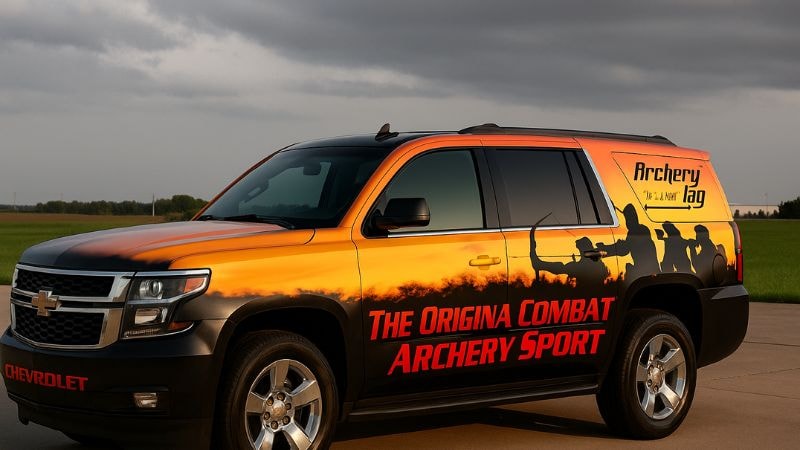
When Can Wrapping Actually Harm Paint?
Vinyl wraps are built to become the first line of defence for the vehicles and may only cause paint damage if there has been negligence. By knowing what factors can cause car wraps damage the paint, you can eliminate them before the damage occurs.
Low-Quality Vinyl Materials: Cheap vinyl car wraps often have second-rate adhesive backing that either doesn’t stick or adhere so hard that they cause paint peeling upon removal. To avoid this, invest in high-quality vinyl wraps with functional properties.
Skipping Proper Cleaning: Surface preparation can make or break your vinyl wrapping process because the wrap adheres better to a clean surface. You can follow the tips we have put together in the next section to prepare the surface like a pro.

Removing Wraps in Improper Conditions: In extreme cold, the film can become brittle and refuse to lift in a single sheet, while in excessive heat, the adhesive can soften and peel away the paint.
However, professionals understand how to tackle wrap removal in different conditions without causing paint damage.
Leaving the Wrap On Too Long:
It is crucial to understand that not all surfaces age the same way. According to technical bulletins from major manufacturers like 3M, horizontal surfaces (like the hood and roof) degrade faster than vertical sides due to direct UV exposure.
- The Rule of Thumb: In high-UV zones (like California or Texas), the safe removal lifespan for a hood wrap may be reduced by up to 40% compared to the doors.
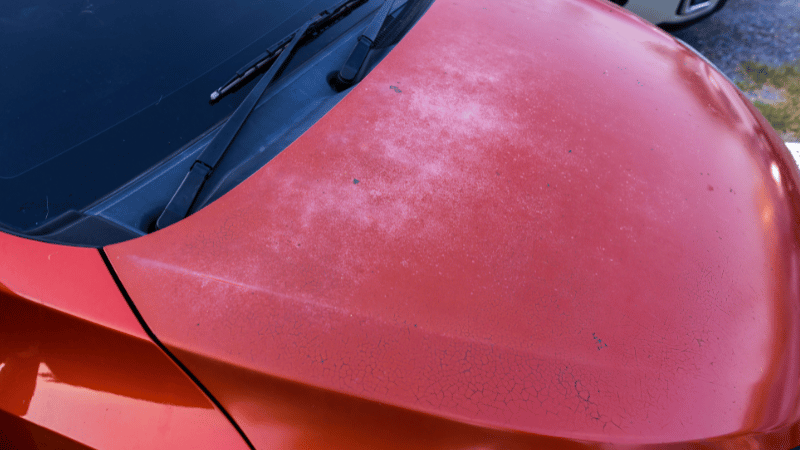
- Expert Advice: “If you notice the vinyl finish turning matte or developing micro-cracks (often called ‘baking’), remove it immediately. Waiting even a few months longer can cause the adhesive to harden onto the clear coat.”
Therefore, it should not be left applied for more than its intended life period.
Applying Wraps on Damaged Surfaces: Covering a surface that was already damaged with a car wrap will only exacerbate the paint damage. However, you can get the minor abrasions and scratches repaired to have the vinyl wrap installed properly.
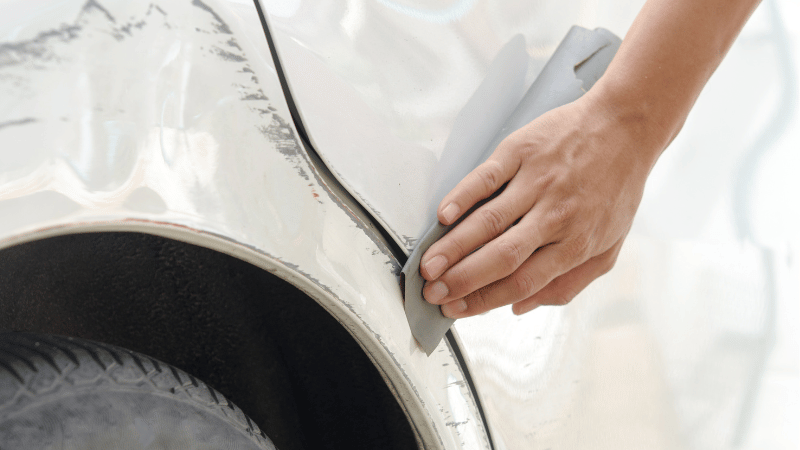
Preparing Your Car Before Wrapping: 101 Guide
Whether a vehicle wrap damages paint or not depends on the application, and that in turn depends on the car’s surface preparation. So, you must prepare the surface before starting the vinyl wrap application so that it adheres properly.
Step 1: Thorough Washing & Decontamination
Dirt and dust are the major culprits that render the adhesion of vinyl wrap ineffective by creating a layer between the car’s surface and adhesive.
Therefore, wash the surface thoroughly with an ammonia-free detergent and a soft scrub to remove the initial load, like bird droppings, tree sap, dust, and grease.
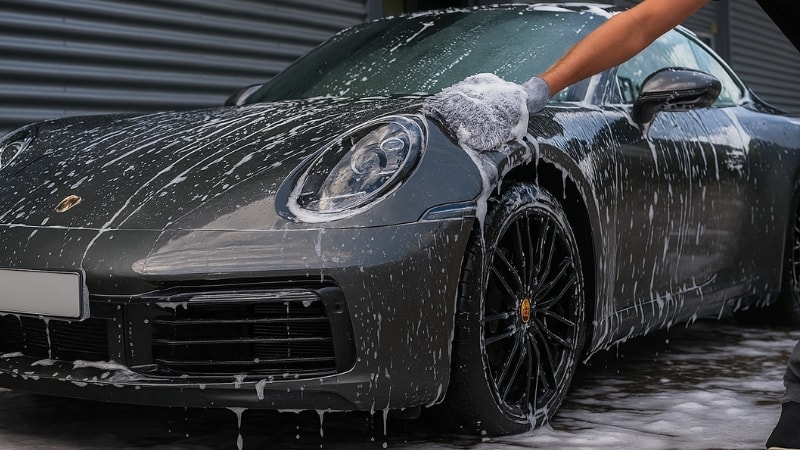
Step 2: Clay Bar for Degreasing
The next step is to target all the stubborn contamination accumulated in nooks and crannies that didn’t come off with basic washing. Take a clay bar and glide it all over the surface to remove microscopic grime and waxes.
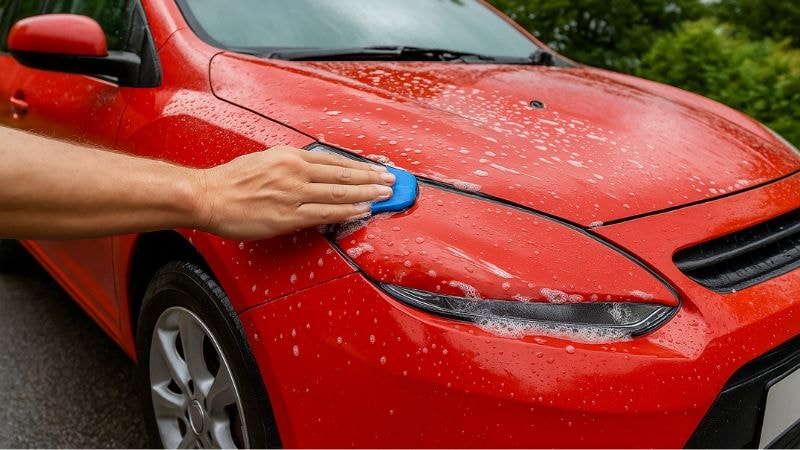
Step 3: Paint Correction
To make sure the vinyl wrap bonds correctly on the paint’s surface, it should be free from scratches or oxidised patches. So look out for minor scratches and correct them before proceeding with the wrapping.
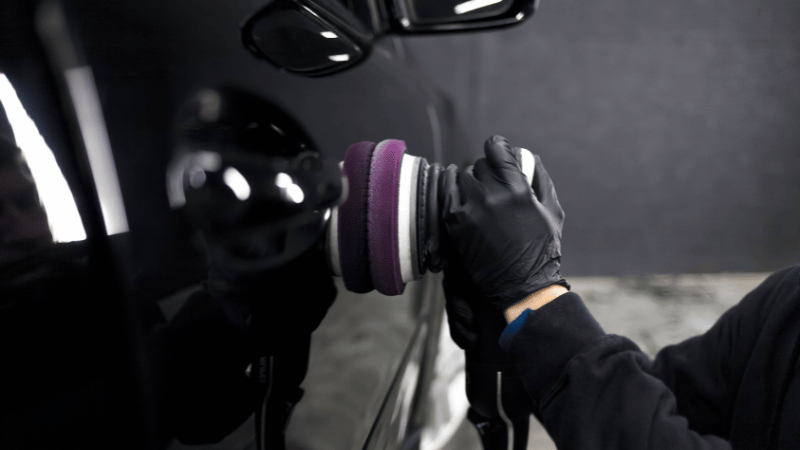
Step 4: Drying
The car’s surface should be completely dry and free from moisture, as water droplets can hinder the vinyl application. Moreover, if the vinyl wrap is applied to a moist surface, it will damage the vehicle’s paint through corrosion.
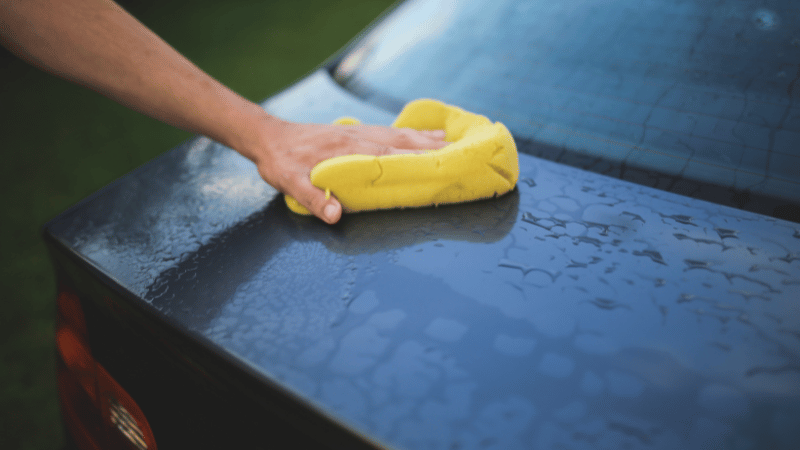
Here’s the quick checklist for making sure you are following the right steps.
| Step | Task | Material Required | Action |
|---|---|---|---|
| 1 | Wash & Decontaminate | pH-neutral car shampoo, wash mitt, and water | Remove dirt and bonded contaminants |
| 2 | Clay bar + Degrease | Clay Bar | Eliminate wax and residue |
| 3 | Minor paint correction | Dual-action polisher | Smooth out light scratches/oxidation |
| 4 | Drying | Microfiber Towel | Remove moisture |
Does the Wrap Removal Process Damage the Car’s Paint?
Removing a car wrap can be intimidating, as though the paintwork might come off hand in glove with it. However, little do most people know that the adhesive of vinyl films is designed to stick to the top layer only, instead of the paint itself.
So, as long as the removal is carried out following the tips below, nothing happens to the paint.
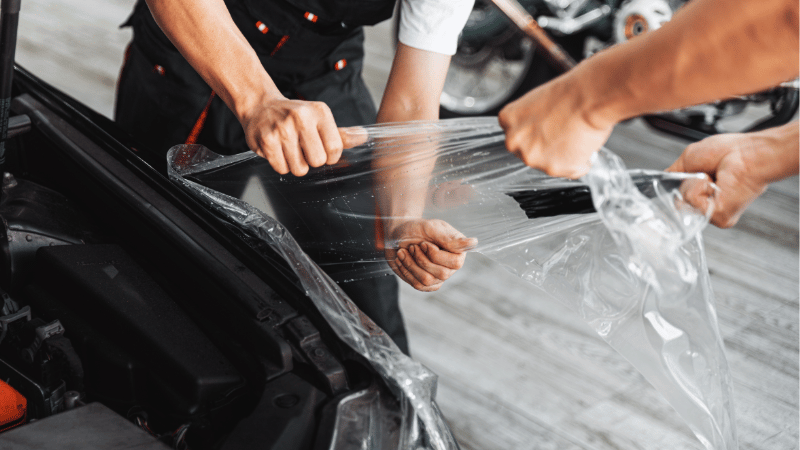
Use of Proper Tools: By employing the proper wrap removal tools, your vinyl car wrap will come off smoothly without inflicting any damage. A heat gun and an adhesive removal solution are typically required to initiate softening of the film before removing the wrap panels.
Professional Assistance: To be on the safe side, you can also go for professional removal. Especially if it is being done after 5-7 years, as the aged wrap can peel paint due to the strong adhesive.
Adhesive Residue Removal: Once the vinyl vehicle wrap is peeled from the surface, you must carefully peel the adhesive residue from the vehicle’s surface.
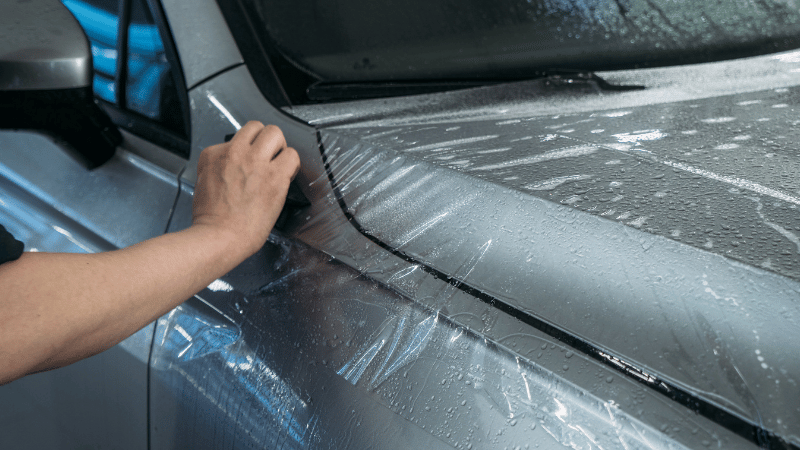
Repainting Required: You must also know that, despite all the precautions, the underlying paint can peel off if there was pre-existing paint damage. Likewise, there can be rusting due to water seepage.
In such cases, you should get high quality paint job done and get your car wrapped with a paint protection film.
Expert Tips to Avoid Paint Damage During Wrapping
Vinyl wraps can only perform their protective function the right way if they are applied correctly to the car’s surface. Different precautions must be taken when you start your wrapping because even one wrong move and your whole effort to protect your car’s paint will be in vain.
We’ll let you in on the expert tips you need to ensure there’s no room for error.
1. Choose Professional Installers

Professional car wrap installers have the know-how to carry out the job, since they’re familiar with all the do’s and don’ts that can make or break a wrap.
Professional installers who own certified accreditations from Avery Dennison’s training programs and the Professional Decal Application Alliance (PDAA) have been rigorously tested for their skills and, therefore, are the best choice.
2. Choose Branded Films
No local film can come close to the durability of a vinyl wrap produced by a reputable manufacturing brand, as they are famous for a reason. Branded films are engineered to have technical abilities for better durability and adhesion that don’t damage the paint.
Therefore, to make your investment truly worthwhile, choose high-quality vinyl wraps from reputable manufacturers like CarLike, which is known for its premium quality.
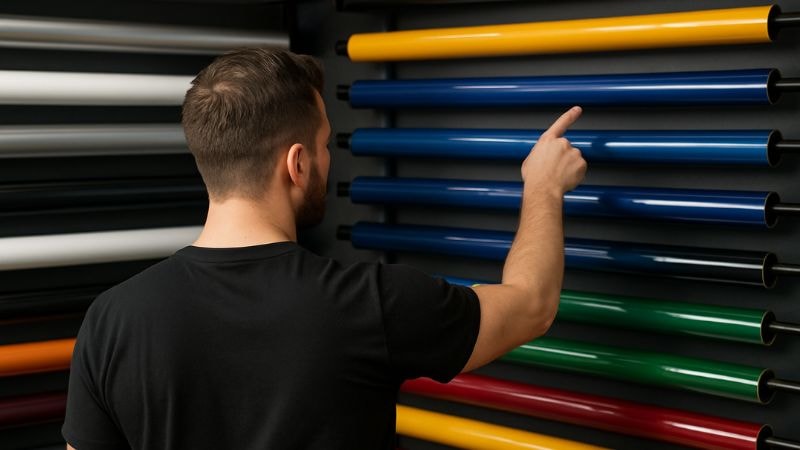
3. Avoid DIY Installation
Doing a DIY wrapping project on your car may sound exciting, but a professional finish cannot be achieved without the right skills. Even if you have some basic know-how, only an expert understands exactly how much heat to apply and how much pressure to exert.
So, if it’s a small area like the hood, bumper, or rims, you may give DIY a try, but for a partial wrap or for a full wrap, professional installation is the safe choice.
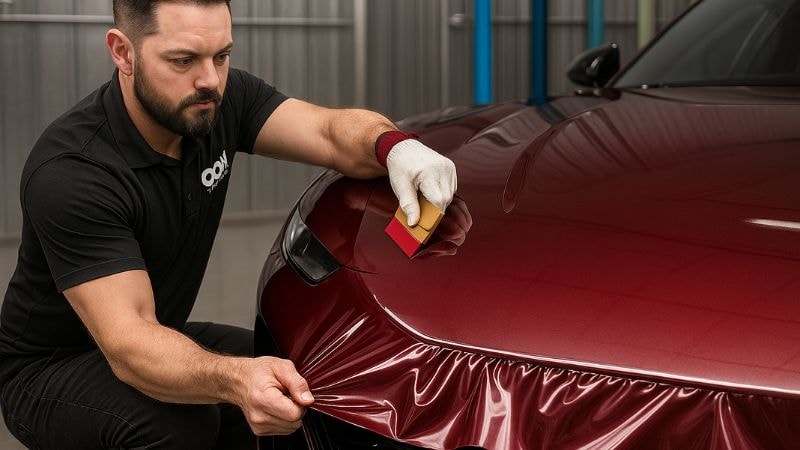
4. Timely Replacement
Although vinyl wraps can be left applied for a lifetime, it has a certain lifespan after which the wrap starts to meet its demise and degrade. Once your car wrap starts to crack or lift from the edges, commonly after 5-7 years, it must be replaced; otherwise, your paint will be harmed.

How to Maintain a Wrapped Vehicle Without Damaging the Paint?
The protection of your vehicle’s original paint doesn’t just end with choosing high-quality vinyl material and professional installation. Providing your wrapped vehicle a minimal aftercare here and there can extend your wrap’s life as well as keep the paint underneath protected.
pH-Neutral Soap & Microfiber Towels
A washing agent with neutral pH protects the polymeric matrix of the vinyl wrap from degradation while performing the cleaning action. Dry the surface with soft microfiber towels instead of random clothes, which can leave scratches and swirl marks.
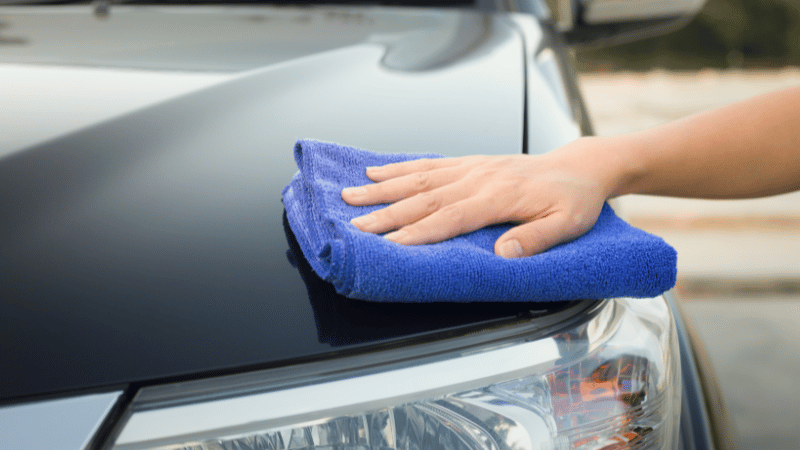
Washing Method
For cleaning a wrapped car, gentle hand washing is the most recommended method to target all the nooks and crannies and wipe off the loose dirt.
High-pressure washing should be steered clear of, as forceful water jets can lift the film’s edges, allowing water to seep in and cause corrosion of the vehicle’s paint.
However, pressure washing with a PSI of 1200 or less and a distance of 12 inches is considered relatively safer.
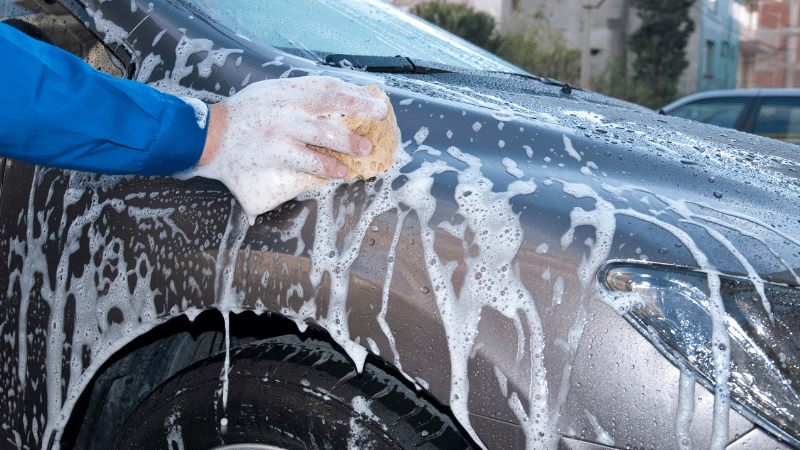
Additional Layer for Extra Protection
Another line of defence is to have your vinyl-wrapped vehicle treated with a ceramic coating to add a second shield of armour. Unlike waxes, which wash off in no time, ceramic coatings hold their ground far longer and provide UV resistance as well.
You can also choose to get your car wrapped with paint protection film over the vinyl wrap.
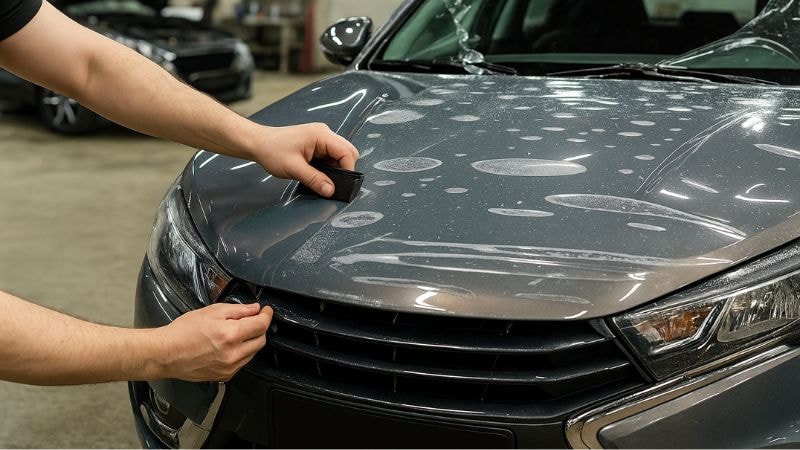
Regular Inspection
You must keep an eye out for signs of damage, like bubbling, minor abrasions, or edges lifting, to address these issues before they turn into a real problem. Wash and clean your car after every long drive or drive in harsh conditions, so that the dirt doesn’t accumulate.
FAQs
Q1: Will wrapping my car damage the paint?
No, wrapping your car with the vinyl film will not damage your paint. Instead, it will protect your car’s paint from potential damage and also conceal the minor imperfections.
Q2: Can a wrap be safely removed later without affecting my car’s paint?
Yes, car wraps are engineered to be removable and can be easily peeled off your car’s surface without affecting the paint. Moreover, you must also follow a proper removal method to make sure there’s no room for damage.
Q3: Is a wrap worth it compared to repainting?
Absolutely, vinyl wrapping always holds a steady advantage over repainting because it comes with various functionalities. Additionally, wrapping is also cost-effective and forms a strong barrier over your vehicle’s surface.
Q4: Can car wraps handle harsh weather and daily driving?
Yes, vinyl car wraps can withstand harsh weather conditions and daily driving. They hold up well under intense sunlight and help prevent UV rays from damaging your car’s paint. However, if your vehicle needs to stay parked for extended periods, it is recommended to keep it in the shade.
Conclusion
It is commonly believed that layering your four-wheeler might damage the paint and reduce the value, but the reality is quite the opposite. These vinyl films are rather the saviours of your cars.
So, now that all your myths have been busted, it is time you take a step for your road buddy and provide it with the protective barrier of a high-quality wrap.
Get CarLike®’s Quality Vinyl Wraps for Perfection Now!
CarLike, the leading manufacturer of premium vinyl wraps with an experience of over 17 years, always brings the best to its customers. Benefit from our low MOQs, superior quality control, and custom OEM/ODM services.
With lightning-fast shipping and 24/7 support, we will help your business shine.
Contact us right now! Get a consultation from our representative for absolutely free.

